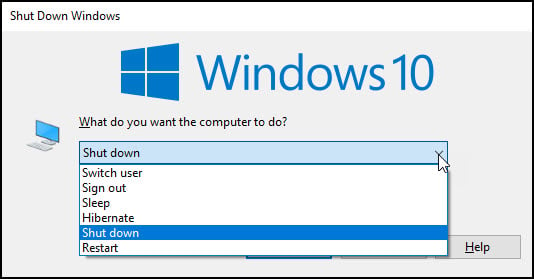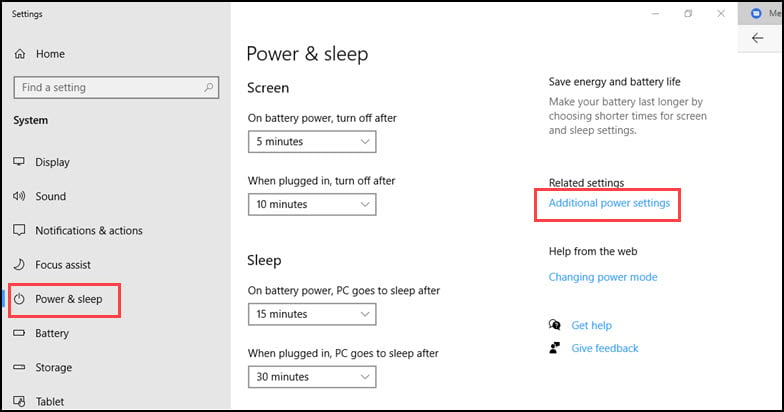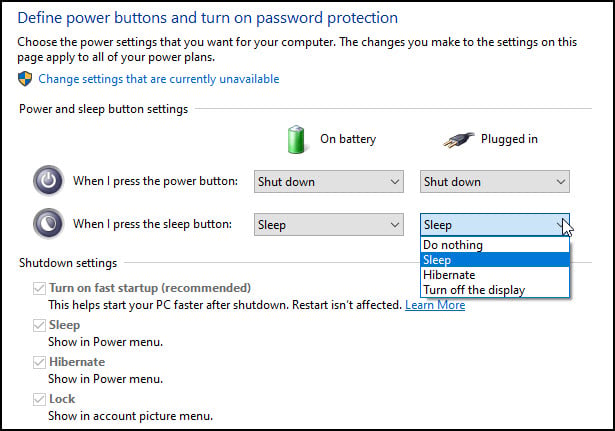Do you know the differences between Windows Sleep and Hibernate? These two Microsoft Windows shutdown options often confuse people. These power-saving options offer advantages, but it’s important to know the differences when creating a power plan for your notebook or desktop. (Updated to reflect Windows 10 changes.)
Accessing Power Commands
When you click Power from your Start menu, Windows shows some options for shutting down your computer.
- Sleep (formerly Stand by)
- Hibernate
- Shut down
- Restart

Alternatively, you might go to the Windows Desktop and press ALT + F4. This presents similar choices but includes Switch user and Sign out.

Most people understand Shut down and Restart as they’re frequently used. Where people get confused is between Windows hibernate vs. sleep. The main differences lie in power consumption and data storage.
Sleep – a Fast State of Readiness
When your computer goes to “sleep,” it’s still on but inactive. Your computer returns to a state of readiness when you press a key or the power button. The time it takes your PC to resume is seconds. You don’t have to go through that longer bootup process.
Your machine recovers quickly as your data is stored in RAM. The slower part is waking up the peripherals. Although your machine is in “stand by,” the power has been cut to items such as your hard drive and monitor. You’re running your machine in a very low-power mode, but it is still on. This mode can be helpful if you’re on a notebook and need to conserve your battery while you step away.
If you have a notebook, you wouldn’t want to keep your computer in this state for several hours if you’re not plugged in. The first issue is that you’re still using power despite your low power consumption state. The more significant reason is once your battery drains, so does your data.
The big drawback to Sleep (Stand by) is that you risk losing whatever data you were working on if the power goes out. As a precaution, you might want to save the data before putting your computer in this mode or use Hibernate.

TextExpander: Worth It? Find Out.
Is TextExpander the right tool to boost your productivity? Get an independent assessment, weigh the pros and cons, and make an informed decision. Find out why I’m a fan.
Read the ReviewWhere’s Windows Hibernate?
Some people may not see the Hibernate menu option, and that may be by design. This power option is best suited for laptops and notebooks. Since desktops are plugged in, they don’t realize the full benefits of this power option.
Along that line, some computers use a hardware solution called “Connected Standby” or “InstantGo.” This feature is baked into a chipset instead of relying solely on Microsoft Windows. It is not a feature you can add to your computer.
Another reason you may not see Hibernate is your system administrator or some group policy disabled it. They are not signaling you out; they figure you don’t need it.
Hibernate – Takes a Longer Approach
An option with a longer perspective is hibernate. Like Sleep, you can recover your place. The big difference is that your PC has shut down and is not pulling power. Another difference is that your data is saved to your hard disk, not RAM. This makes it a safer but slower option for shutting down and resume.
Hibernate will save your open files to a special Windows file called hiberfil.sys. This large file usually resides in your root folder (c:hiberfil.sys). The file size closely matches how much RAM your PC has installed. If you have 8 gigs of RAM on your computer, you’re going to have to give up 8 gigs of hard disk space.
Note: You can delete the hiberfil.sys file only if you disable hibernate.
When you press your power button, Windows will start and open the files you were using. The process is not instantaneous as with Sleep, but it gets you to the same place. You may find this option is faster than rebooting, as Windows doesn’t have to do things such as detecting your hardware.
Create a Windows Power Plan
Most Microsoft Windows systems allow you to set various power options. This is ideal for notebook users who wish to conserve power after a certain period of inactivity. It’s also useful for desktop owners who wish to conserve power.
Your computer has various default profiles. These include:
- Balanced (recommended) – determine optimal settings based on your hardware
- Power saver – reduce performance to save energy
- High performance – better performance, but uses more power
To See Your Power Profile in Windows 10,
- In the search box on the taskbar, type “power & sleep.”
- Click Power & Sleep settings.
- You should see your current settings.

Note: there are options for both battery and plugged in even if you’re using a desktop.
- You can click any of the drop-down menus to change the times for your power and sleep options.
- To see your plan, click Additional power settings on the right side.
Enable & Disable Power Buttons
Sometimes, you might want to adjust the power menu options. For example, add or remove Hibernate. This is done using the Additional power settings mentioned above.

If I click this option, I get another panel that allows me to set button actions and which items should show in the Power menu. For example, I can toggle off Hibernate or redefine the Sleep option to turn off the display.

We may be used to cheap and abundant energy, but there is little need to keep your computer fully powered all the time. Microsoft and various hardware vendors have improved power management systems. The bigger question is which one to choose.
